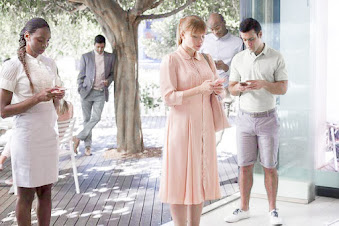The Diffusion Theory and iPhone Demographics
Rogers' Diffusion Theory is fascinating as it pertains to how we tend to decide if new ideas or innovations are accepted into society. However, a shortcoming of this theory is that it does not include a robust explanation for what characteristics might make some people early adopters or late adopters. Below I have broken down two key demographic components that have been vital to my understanding of how this theory could function in society. Nonetheless, keep in mind that these are simply generalizations and overarching observations which obviously cannot be applied to every situation. Also, these characteristics might make someone more likely to be an early or late adopter, but a blend of these observations could also produce similar results. In my experience:
1.) Early adopters tend to :
- live closer to cities
- live in higher-income communities
2.) Late adopters tend to:
- live in more rural areas
- live in lower-income communities
An example of how this theory might function is evident in the monumental spread of the Apple iPhone. First off, the iPhone caught on quickly and became a global phenomenon during its release in 2007 as a result of its unique ability to serve as a mobile phone, portable media player, game console, and handheld computer all consolidated in one device. The iPhone provided a unique, life-enriching service that appealed to a vast array of consumers. The successful spread of any new device can also relate back to the vital question: Does it have a relevant and distinct customer benefit that separates it from the competition? In the case of Apple's iPhone, the distinct customer benefit was
Now, let's also take a look at who had access to these life-altering devices first. Before the release of hyper-expedient delivery services such as Amazon Prime, when Apple consumers wanted to first get their hands on the newest iPhone, they would more than likely go to an Apple store. Below I have included a map of where Apple stores are located in the US.
Notice how a vast majority of Apple stores are concentrated in wealthy, urban areas such as in western California and the east coast. Apple users who live in rural interior states such as Montana or South Dakota might have had a more difficult time reaching Apple products quickly due to both a lack of convenience to stores and a lack of adequate financial support behind the new technology. This could serve as an explanation for why people in rural areas tend to be late adopters.
Perhaps, so many people become early adopters of innovations such as the iPhone can be explained by how densely populated wealthy urban areas often are. Having both ease of access geographically and higher income levels to financially support the innovation makes it highly viable for a large crowd of early adopters to arise.
An interesting case to be made is why some people chose to opt out of new innovations. For instance, with the iPhone, people who don't feel the need to purchase one often have something that already performs a similar function in their lives and is more financially affordable, such as a Samsung or Android. For the opt-out crowd, some new technological innovations may not appear to have a relevant customer benefit that separates it from the competition because there already exists a cheaper version that functions in a similar capacity.
In terms of cost-benefit analysis, while the iPhone certainly provides us with a world of information at our fingertips and is revolutionary in its capacity to perform countless functions condensed into one sleek design, it has inevitable drawbacks and also permanently changed how we interact in society. To state the obvious, the newest iPhones are incredibly expensive, running at around $800-$1,000 per device. In addition, now more than ever, we often neglect the world around us and the in-person relationships we have due to the ease of social media, text, and call. If not careful, this can be detrimental to bonds with family, friends, and romantic partners. Also, the harsh blue light emitted from iPhones has been scientifically proven to interfere with our bodies' circadian rhythms and our ability to get quality sleep at night which further impairs our brains' ability to effectively communicate.
Despite their evident drawbacks, however, society as a whole seems to accept the integration of Apple products into their lives. Even though there is a clear divide between the early and late adopters in terms of geographic location and financial accessibility, there are few regions of the globe today that Apple products in some capacity have not reached. It will certainly be fascinating to see where future innovations may arise, and how they might continue to shape the way we view the world.




Comments
Post a Comment